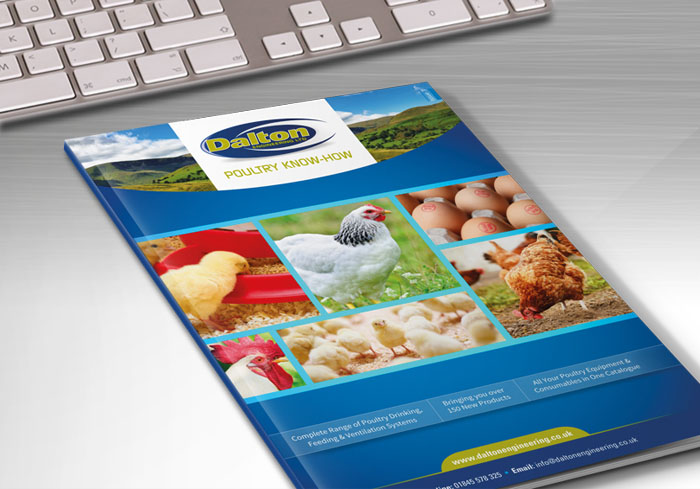The landscape of employee time tracking is undergoing a significant transformation, reshaping how organizations approach attendance and productivity. In an era where efficiency and adaptability are paramount, new methods are emerging that challenge conventional practices. This evolution paves the way for enhanced accuracy and engagement in labor-related processes, ensuring that businesses can thrive in increasingly competitive marketplaces.
As companies strive to optimize their operations, the focus is shifting towards understanding the limitations of traditional systems. Outdated techniques often lead to misconceptions regarding worker attendance and performance, hindering overall effectiveness. By addressing these shortfalls, forward-thinking organizations can implement fresh strategies that better reflect the dynamic needs of both the workforce and the organization itself.
New technologies are providing innovative solutions to help businesses maximize employee contribution while maintaining a keen eye on productivity metrics. The use of real-time data and advanced tracking methods enables managers to make informed decisions that enhance operational efficiency. Exploring these novel approaches reveals an exciting path forward, where enhanced engagement and streamlined processes coexist, leading to a more harmonious workplace environment.
Understanding Punch Clock Evolution
The journey of timekeeping devices and systems used in workplaces has significantly influenced the way organizations monitor employee attendance and productivity. Over time, these tools have undergone profound transformations, adapting to the needs of both employers and employees alike.
Initially, traditional mechanisms focused solely on tracking hours worked. However, as workplaces evolved, so did the requirements for accuracy and functionality. Key stages in this development include:
- Manual Recording: Early methods relied on handwritten logs and timesheets, requiring employees to track their own hours, which often led to discrepancies.
- Mechanical Systems: The introduction of mechanical devices automated the process, allowing employees to stamp or imprint their hours, thereby reducing errors.
- Digital Solutions: With the advent of computer technology, electronic systems emerged, offering enhanced precision and real-time data access.
- Cloud-Based Platforms: Current trends emphasize online applications that not only record time but integrate various aspects of human resources, allowing for comprehensive analysis.
Ultimately, this evolution reflects a broader trend towards streamlining processes and harnessing technology to foster a more efficient working environment. Understanding the transition of these timekeeping systems provides valuable insights into current practices and potential future developments in the field.
Innovative Trends in Workforce Management
The contemporary work environment is undergoing remarkable changes, driven by the integration of advanced technologies and evolving methodologies. As organizations aim to optimize performance and enhance employee experience, a series of trends are emerging to redefine how teams operate and collaborate. These advancements are not limited to mere tools but encompass a holistic approach to improving organizational culture and productivity.
Flexible Scheduling Solutions have gained momentum, allowing employees to tailor their working hours to fit personal needs while still meeting organizational goals. This adaptability promotes a better work-life balance, which in turn enhances job satisfaction and retention rates.
Data-Driven Insights are becoming increasingly prevalent. Companies are harnessing analytics to assess employee performance and engagement levels. By utilizing this information, organizations can implement targeted strategies for improvement, ensuring that team members are working at their most efficient.
Remote Collaboration Tools foster connectivity among dispersed teams. With the rise of telecommuting, the ability to communicate and collaborate seamlessly across various locations has become essential. These platforms not only facilitate communication but also support project management and task tracking, boosting overall effectiveness.
Employee Wellness Programs are taking center stage as businesses recognize the importance of mental and physical health in the workplace. By prioritizing well-being, organizations are fostering a more productive and engaged workforce, mitigating burnout and enhancing morale.
In conclusion, the landscape of employee oversight is rapidly evolving through various innovative approaches. By embracing these emerging trends, organizations can create a more dynamic, engaged, and efficient working environment, ultimately leading to sustained success.
Challenges Faced by Traditional Systems
The conventional methods employed for tracking employee hours and activities often encounter numerous difficulties that impede overall efficiency and accuracy. These limitations can affect both employers and staff, leading to frustration and misunderstandings in the workplace.
One of the primary issues is the lack of flexibility within outdated systems. Many approaches are rigid, making it challenging to adapt to the dynamic requirements of modern businesses. This inflexibility can hinder response times to changes in workforce structure, project demands, or even regulatory updates.
Moreover, traditional mechanisms frequently rely on manual input, which can lead to errors in data collection and reporting. Human mistakes are inevitable, and when they occur, they can result in inaccurate payroll processing, compliance problems, and employee dissatisfaction.
Another significant concern is inefficient communication between various departments. Outdated systems often fail to provide real-time data, resulting in delays and misalignments across teams. This lack of synchronized information can exacerbate operational challenges and reduce overall productivity.
Furthermore, the cumbersome nature of older technologies can cause employee disengagement. When individuals feel that their time management tools are obsolete or difficult to use, it can diminish motivation and performance, ultimately affecting the organization’s bottom line.
Emerging Technologies in Time Tracking
In the contemporary landscape of labor monitoring, novel advancements are reshaping how organizations oversee employee attendance and productivity. These cutting-edge solutions are not only aimed at enhancing accuracy but also at simplifying the processes involved in recording working hours and activities. From artificial intelligence to the integration of mobile applications, the evolution in time tracking technology promises to deliver unprecedented benefits.
Key Technologies Reshaping Time Monitoring
- Biometric Authentication: Utilizing fingerprints or facial recognition to ensure precise identification of employees during attendance logging.
- Mobile Applications: Offering real-time tracking via smartphones, allowing employees to check in from various locations, thus accommodating remote work models.
- Cloud-Based Solutions: Enabling seamless access and storage of tracking data, ensuring that information is securely maintained and easily retrievable.
- Artificial Intelligence: Leveraging algorithms to analyze time usage patterns, providing insights that can enhance productivity and efficiency.
- Wearable Technology: Allowing employees to automatically track time spent on tasks through devices worn on their person, integrating data collection in a non-intrusive manner.
Benefits of Advanced Time Tracking Tools
- Improved accuracy in time recording reduces the likelihood of errors associated with manual entry.
- Enhanced visibility into employee activities, enabling better planning and resource allocation.
- Greater flexibility allows organizations to support various work arrangements, including remote and hybrid models.
- Real-time data collection facilitates prompt decision-making based on current workforce patterns.
- Increased employee satisfaction by minimizing administrative tasks and focusing on more substantive contributions.
Impact of Remote Work on Timekeeping
The shift towards flexible work arrangements has profoundly influenced how organizations monitor and record employee hours. This trend has brought about a need for new strategies to ensure accountability and optimize productivity in a setting where traditional oversight methods may no longer apply. Particularly, businesses have had to adapt their systems to align with the evolving expectations of their teams.
Challenges of Time Tracking in a Virtual Environment
In a remote setup, the lack of physical presence can create challenges for tracking activity. Employees often have diverse schedules and varying workplaces, making it harder to enforce standardized protocols. Issues such as inconsistent availability, distractions at home, and the blurring of work-life boundaries complicate the accurate recording of hours worked. Organizations must continuously assess their practices to ensure they are fair and effective while still meeting compliance requirements.
Technological Solutions and Best Practices
To address these challenges, companies are increasingly relying on digital tools that simplify reporting and transparency. Software applications now provide features like real-time monitoring, integration with project management systems, and user-friendly interfaces. Employers are encouraged to adopt best practices such as setting clear expectations, providing guidelines for work hours, and allowing for flexibility to maintain morale and trust among employees. By focusing on outcomes rather than time spent, businesses can create a more engaged and productive workforce.
Future Predictions for Workforce Solutions
The landscape of employee administration is rapidly evolving as organizations seek to enhance efficiency and adaptability. New concepts and technologies are reshaping how personnel connectivity and productivity are approached, ushering in a new era of possibilities. The focus is on creating a cohesive environment that fosters collaboration and allows for real-time data utilization to improve operational strategies.
Advanced Analytics and Artificial Intelligence will become pivotal in decision-making processes. These tools will enable businesses to gain insights into patterns and trends, helping to anticipate needs and optimize resource allocation. Companies will increasingly rely on data-driven approaches to enhance employee engagement and satisfaction.
Remote and Hybrid Models will solidify their place as standard practices. The lessons learned during recent global shifts have proven the effectiveness of flexible working arrangements. Future designs will emphasize a balance between remote capabilities and in-person interactions to maintain a cohesive team dynamic.
Enhanced Communication Channels will emerge as integral facets of organizational culture. As teams become more dispersed, the demand for seamless connectivity will drive the development of sophisticated platforms that foster interaction and collaboration. These technologies will support diverse communication preferences, ensuring inclusivity and engagement.
Focus on Employee Well-being will rise to prominence as organizations recognize the value of holistic approaches to personnel health. Future strategies will prioritize mental health resources, work-life balance initiatives, and tailored benefits to create a supportive workplace environment that nurtures talent and retains skilled professionals.
In conclusion, the future of employee solutions promises to be dynamic and multifaceted, blending technology with human-centric strategies. As these changes unfold, organizations will need to remain agile and responsive to harness the full potential of their teams.
Questions and answers: Punch clocks innovation dead zones
How does feedback control help farmers efficiently manage nitrogen fertilizer use in agriculture?
Feedback control allows farmers to measure soil nitrogen levels and adjust the application of nitrogen fertilizer accordingly. This process ensures that crops receive the appropriate nutrients while minimizing the risk of chemical pollution and nitrogen runoff into waterways such as the Gulf of Mexico. Efficient feedback loops in agricultural systems promote healthier soil and crops, reducing environmental impact and improving sustainability.
How do scientists use phase and frequency control to study marine oscillation cycles in oceans and rivers?
Scientists measure phase and frequency variations to analyze oscillation cycles in marine environments such as the ocean and river systems. These cycles help demonstrate the natural rhythm of environmental changes and provide insights into climate patterns. The research also aims to solve challenges like dead-zones in the Gulf of Mexico, where oxygen depletion affects marine life. Understanding these cycles allows scientists to propose strategies for restoring ecological balance.
What is the role of atomic components in generating reliable signals for industrial and scientific applications?
Atomic components, such as atomic clocks, are used to provide precise and reliable signals that measure time and distance accurately. These components ensure that systems maintain synchronization, supporting industrial automation, marine navigation, and scientific research. With the ability to achieve high-frequency precision, atomic systems play a fundamental role in control loops and feedback mechanisms worldwide.
How does the switching principle apply to automatic systems and password protection technologies?
The switching principle is widely used in automatic control systems and password management tools, ensuring that components function efficiently by controlling access based on specific inputs. For instance, switching mechanisms are implemented in software to reset or lock systems after multiple failed login attempts. In combination with feedback loops, these systems manage username and password security while maintaining reliable and automatic performance across applications.
How do researchers use mathematical models to understand dead-zones in the sea and their impact on marine ecosystems?
Researchers develop mathematical models to study how variables like oxygen levels and nutrient runoff contribute to dead-zones in the sea. These models help confirm the conditions that lead to oxygen depletion, which affects marine life and disrupts ecosystems. The models also allow researchers to analyze how these dead-zones form over a specific duration and propose strategies for mitigating their impact.
How do pulse variables and gravity influence the efficiency of fuel pumps on ships?
Fuel pumps on ships rely on precise control of pulse variables and gravity to maintain efficient fuel flow. Gravity assists in the flow dynamics, whereas pulse inputs control the fuel’s movement through the pump system. Managing these variables simultaneously ensures smooth operation, preventing interruptions during a ship’s voyage and improving overall fuel efficiency.
What role do librarians and researchers play in managing academic journals and abstract submissions within the society of scholarly communication?
Librarians and researchers work together to ensure that academic journals maintain high standards by reviewing and curating abstract submissions. Researchers contribute original studies, whereas librarians manage the workflow and confirm that submissions align with the society’s guidelines. Both roles are essential in promoting knowledge sharing and supporting the academic community.
How does the use of JavaScript at the edge improve the performance of web applications, even under slow network conditions?
JavaScript executed at the edge allows web applications to run faster by offloading processes closer to the user, reducing latency. Even under slow network conditions, this setup ensures that key functions, like dynamic content updates, are handled efficiently. JavaScript can simultaneously manage multiple operations, ensuring the output of a responsive web application with minimal delays.


